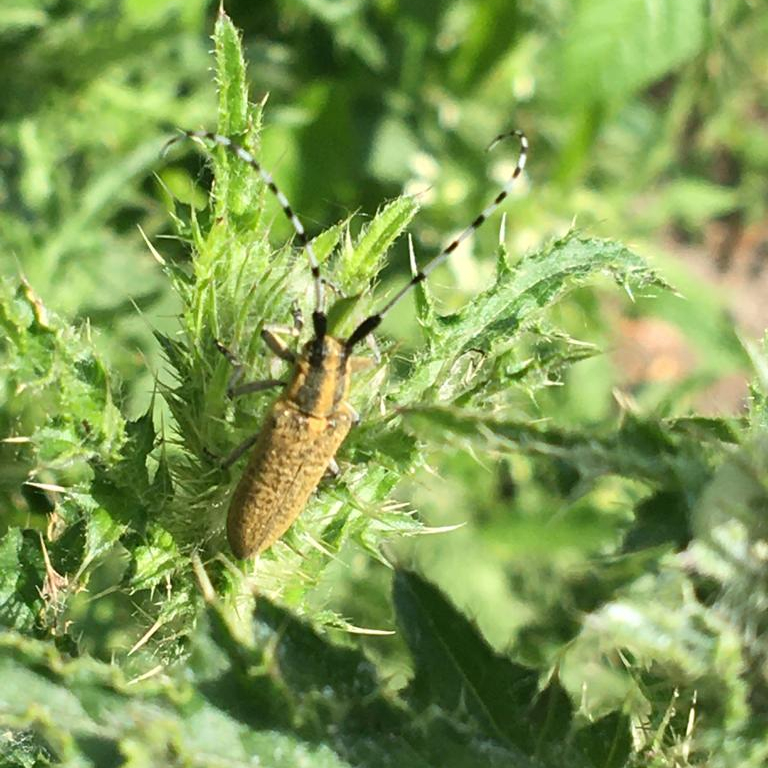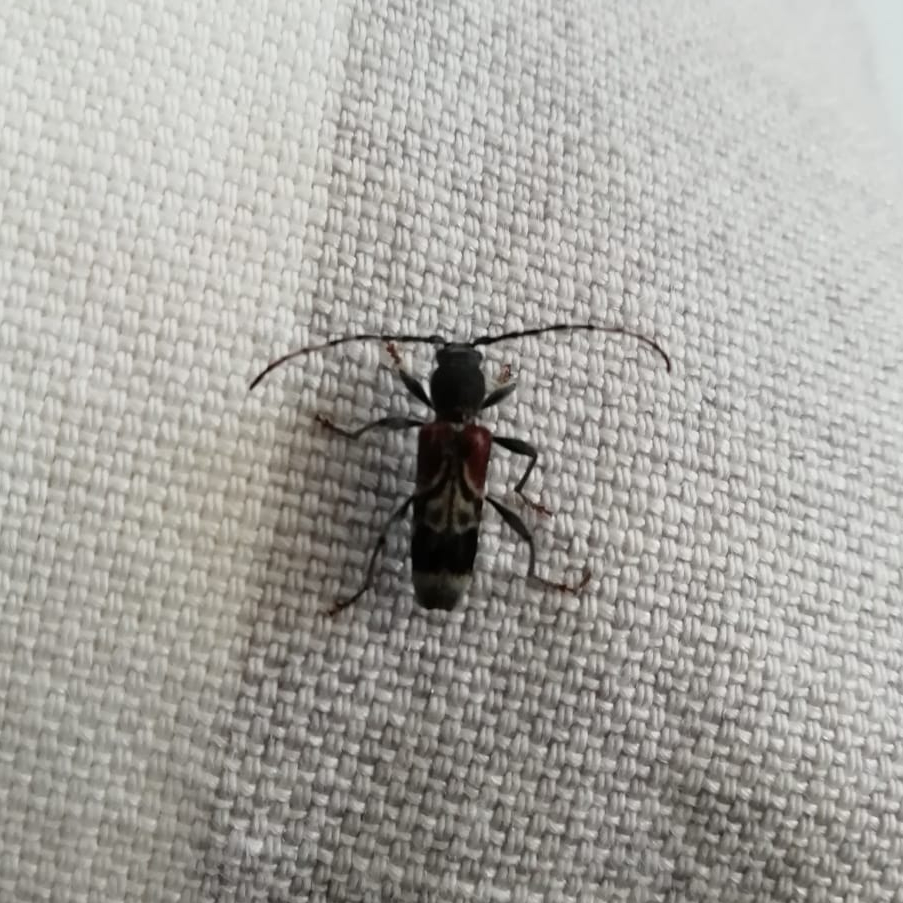Sara Steele, Museum learning assistant says:

With 400,000 named species of beetle found across the world and over 4,000 species in the British Isles, beetles are a diverse bunch even among invertebrates. They come in all shapes and sizes, from long and thin soldier beetles to rounded ladybirds.
This diversity points in part to their distribution; being found in every habitat except the sea and polar regions.
Beetles live in and interact with their environment in a host of different ways. From carnivorous hunters (such as the violet ground beetle, a night-time hunter of slugs), wood burrowers (longhorn beetle larvae and adults), carrion and dung beetles which help to decompose waste matter to herbivorous plant eaters (such as weevils).
An often surprising bit of information is that beetles are one of the oldest pollinators. The world has been home to pollen-eating beetles for a very long time, and as a consequence, beetle pollinators.
Why do beetles bask?
Like all insects beetles are exothermic; meaning that they gain their bodyheat from their surrounding environment. Our muscles work better and faster when they are warm, and so do beetles’. While some species are more active on sunny days, plenty of beetles can be seen basking on stones, paths, leaves and flowers.
The extra warmth will help them to exert short burst of energy for flying or rapid movement, so take a photograph while you can!
Check out our gallery of beetles below. Have you seen any similar-looking species on your summer wanderings?














Recent longterm studies show evidence that the majority of insect species are in decline due to habitat loss and the impact of climate change. Nonetheless, we can all lend a helping hand in their recovery and survival.
Even small garden habitats such as logpiles or leaf litter can provide shelter and food for many mini-beasts. With beetles making up 25% of all named species in the world, a little can go a long way. Learn how to build your own here:

Wildlife Trusts: How to make a log shelter
See which invertebrates live in your garden or green space using our observation video tutorial:
Click here for our How to observe wildlife: beat-netting tutorial.
See more images of beetles and mini-beasts from Prof Bill Amos here: An Insect a Day or discover what our visitors to digital event ZoologyLive! found where they are: Your Sightings on iRecord
Share your beetle photos with us on Facebook, Twitter or Instagram by tagging us or using #OpenYourWindowBingo to feature in our Community Gallery.
Join the Wildlife Trusts campaign for a #WilderFuture and find out what else you can do for your local wildlife.
Discover more about UK beetle species here: Wildlife Trusts explorer: Beetles


2 thoughts on “Basking Beetles”